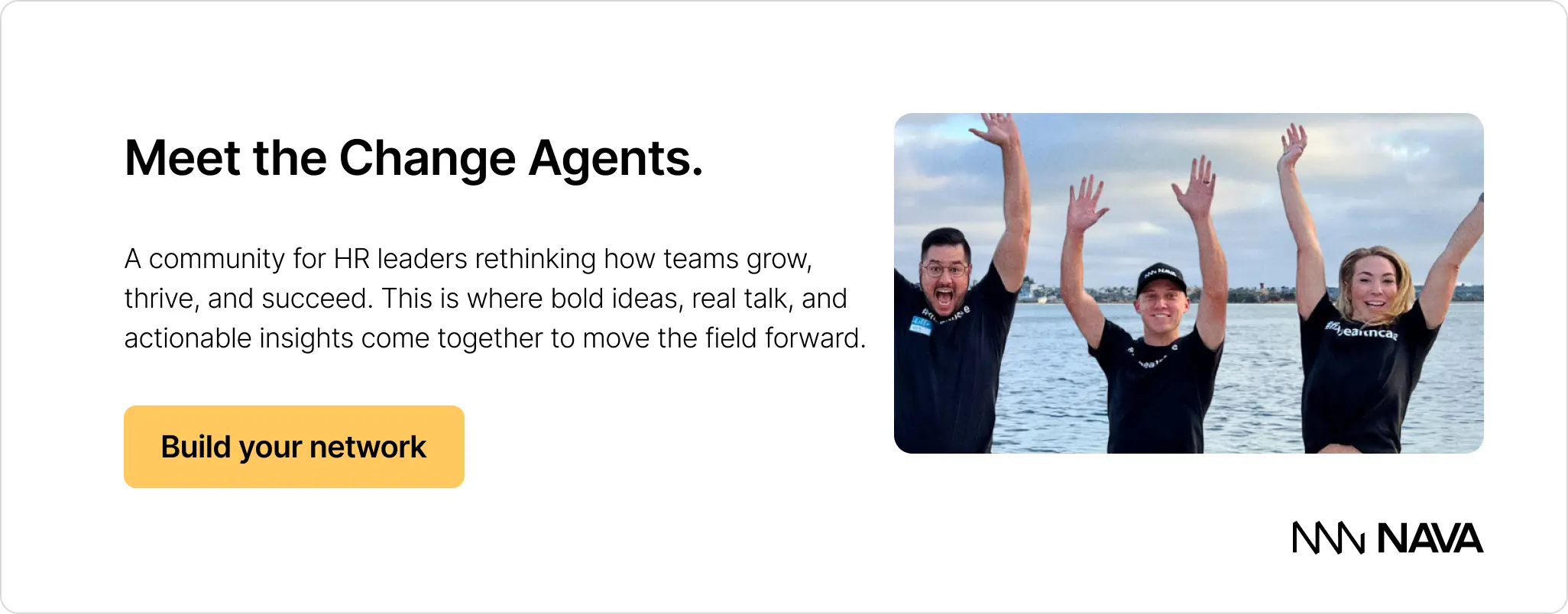3 long-term hiring strategies: how to recruit for growth, culture, and retention
%20v1.webp)
In fast-paced work environments, hiring often prioritizes immediate needs over long-term strategy, leading to short-term fixes that may not support future growth. This blog, inspired by a conversation with Hope for Haiti CEO Skyler Badenoch, encourages HR leaders to shift toward intentional hiring that emphasizes values alignment, growth potential, and culture add. It offers actionable strategies to identify high-potential candidates, build long-term onboarding plans, and avoid the costly pitfalls of rushed hiring decisions.
In high-growth environments, the pressure to fill roles quickly is real. A sales team needs a closer. A new program needs a leader. A stretched department needs relief. The result? Many hiring and recruiting strategies lean toward speed over strategy. But while short-term hires may fill an immediate gap, they often fail to support long-term success.
It’s time to shift away from quick fixes and toward intentional hiring strategies that prioritize values alignment, growth potential, and culture add. In other words, hire not just for immediate performance, but for long-term impact. In a recent episode of Missing Chapters, we sat down with Skyler Badenoch, CEO of Hope for Haiti, to explore what it really means to hire for the future. In this blog, we’ll share key takeaways from that conversation and practical ways you can apply these strategies to build a stronger, more resilient team.
The challenge: hiring for the role vs. the road ahead
Too many organizations evaluate new hires based on how quickly they deliver within the first 30, 60, or 90 days. While structured onboarding has value, over-indexing on early outputs can lead to superficial assessments and ultimately, poor hiring decisions.
Consider complex roles like strategic leadership or development work. These often involve 12–24-month cycles. Expecting new hires to demonstrate full impact in their first quarter isn't just unrealistic—it’s misaligned with the role’s trajectory.
According to research from CareerBuilder, 75% of employers admit to hiring the wrong person. The most common causes? Rushed timelines and inadequate screening. Organizations often end up with short-term performers who aren't built for long-term value.
%20QUOTE%201.webp)
The solution: hire for culture add, not just immediate fit
Effective hiring strategies start by rethinking what success looks like in a new hire. Instead of searching for someone who looks perfect on paper or interviews with polish, shift the focus to:
- Alignment with core values
- Demonstrated adaptability and resilience
- A track record of growth over time
- Ability to enrich the culture—not just fit in
Hiring for culture add means bringing in people who stretch the team’s thinking, challenge the status quo, and make the organization stronger through difference—not sameness.
At Hope for Haiti, for example, leaders moved away from traditional hiring profiles and focused on mission alignment and values. Candidates are evaluated using a framework called REACH:
- Resilience in ambiguity
- Empowerment of self and others
- Accountability to teams and outcomes
- Collaboration across hierarchies
- Hope and purpose in their work
This framework allowed the organization to uncover high-potential hires who may have been overlooked in more traditional interviews—but who later helped launch major initiatives like a 125-school construction program.
%20QUOTE%202.webp)
The implementation: 3 hiring strategies that drive long-term success
If you’re ready to build a more sustainable, impact-driven workforce, these hiring and recruiting strategies offer a roadmap:
1. Interview for growth and values, not just credentials
Resumes can only tell you so much. A better approach is to probe for values alignment and growth potential:
- Ask candidates to share real examples of learning from failure.
- Explore how they’ve navigated complex, team-based challenges.
- Dig into what motivates them and whether it aligns with your mission.
These insights help identify future leaders who can evolve with your organization.
2. Think beyond the first 90 days
Too many onboarding programs treat day 90 as the finish line. Instead, view onboarding as a year-long arc:
- Build in mentorship opportunities and structured feedback cycles.
- Empower new hires with autonomy over time, not just tasks on day one.
- Ensure managers are equipped to coach, not just supervise.
Companies with long-term onboarding see major benefits: employees are 58% more likely to stay for at least three years.
3. Prioritize intentionality over immediacy
Hiring urgency is real, but reactive decisions lead to churn. Instead:
- Create a hiring scorecard that prioritizes long-term potential and culture add.
- Slow down if needed to find a values-aligned candidate—even if they require development.
- Avoid defaulting to “culture fit” as a proxy for sameness.
The U.S. Department of Labor estimates a bad hire can cost 30% of that employee’s first-year earnings. Taking the time to hire right is a better investment.
Build for tomorrow, not just today
Hiring decisions shape the future of your organization. When done right, they unlock new levels of innovation, trust, and engagement. But that requires moving beyond resume checkboxes and 90-day outputs.
Start by asking: Who will grow with us? Who will challenge us in the right ways? Who will enrich our culture?
By hiring for culture add, investing in long-term support, and focusing on values alignment, your team won’t just fill roles—you’ll build the foundation for sustainable success.





.webp)

.webp)